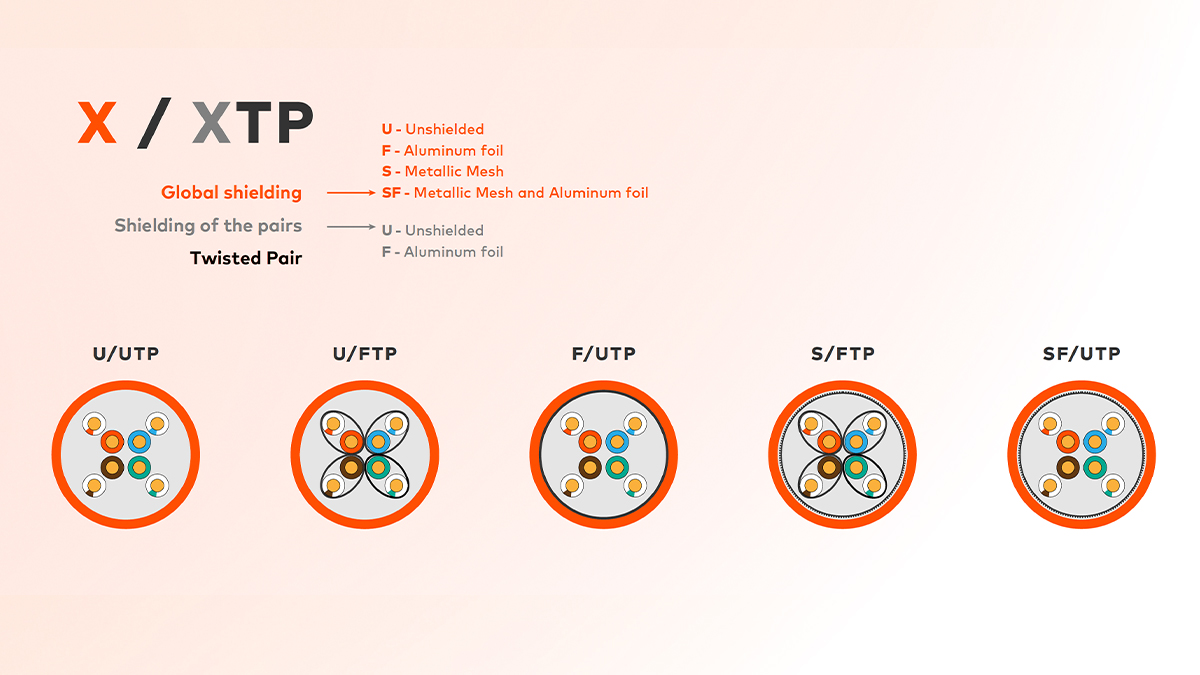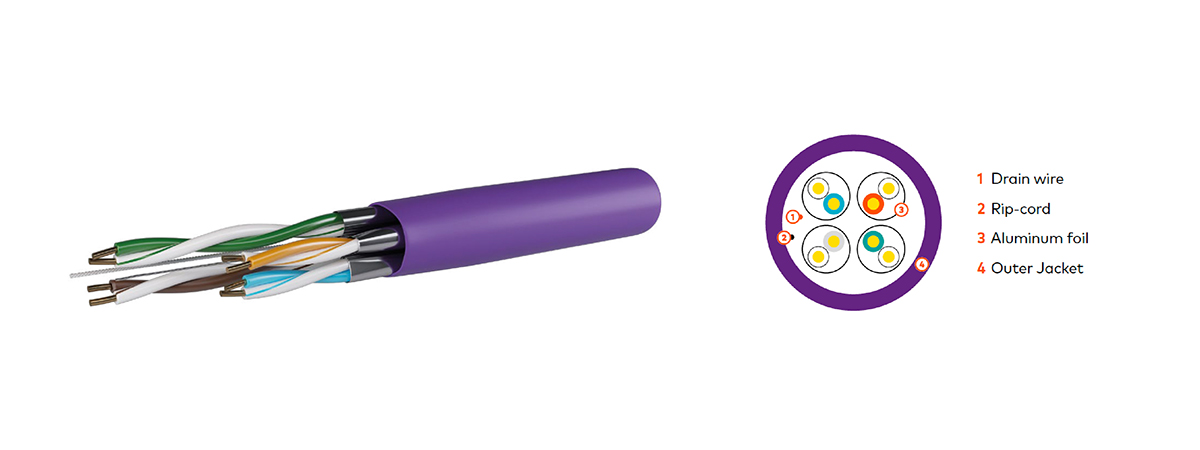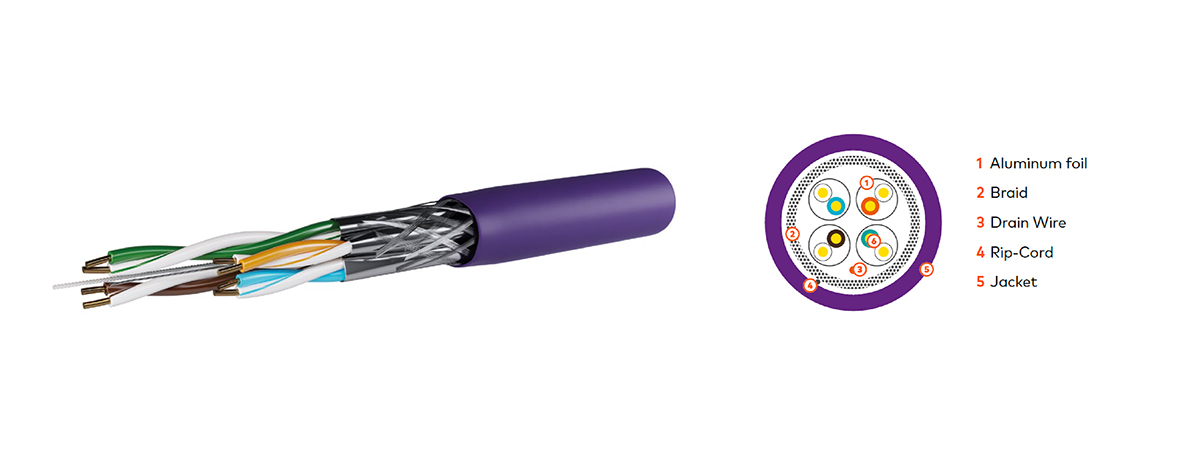What is the difference between shielded and unshielded cables?
To design a structured network, among other aspects, we must take into account the type of cable we should use. For this purpose, I begin by presenting the different types of cables that exist at our disposal:
Twisted pair cable construction

Unshielded Cable
U/UTP (Unshielded Twisted Pair) cables are unshielded cables, most commonly used in network infrastructures in residential, commercial and service buildings.
Normally used in network solutions with differentiated cable paths and that do not share them with the electrical network, for this reason they do not require aditional electromagnetic protection.
They are more flexible and easier to connect and more vulnerable to electromagnetic noise.
Example of U/UTP cable

Shielded Cables
Shielded cables are most commonly used in industrial environments, hospital centers, and wherever there are sources of considerable electromagnetic induction.
Example of U/FTP cable

Example of S/FTP cable

Among the various constructions of Shielded Cables, the most common are called U/FTP (Unshielded Foiled Twisted Pair) and S/FTP (Shielded Foiled Twisted Pair). Both have an aluminum foil wrapping each pair, and in the second case, a steel mesh that envelops all pairs and guarantees superior electromagnetic protection. Protecting them not only from external interference, but also in the isolation between pairs, reducing crosstalk and interference in adjacent cable pairs.
The shielded network solution requires continuity of this metallic protection throughout the entire length of each connection (Permanent Link/CANAL). It is necessary to have shielded connectivity (RJ45 STP Modules) and shielded Patch Cords at both ends of the link. So that the electromagnetic interference that may occur in the cables, can make flow to earth, thus avoiding propagation delays, bit errors and even breaks in the link.
Another important aspect is the earth value, which should not exceed 10 Ohm. Also, there should be no earth differentials, it should be a single Earth. With connection to the BGT – General Ground Bus, in turn connected to the TPT – Main Ground Terminal.
Want to know more about this subject? See other blog articles such as:
Guide to select the right fiber cable
–
Get to know our full range of copper cables here.


Sorry, the comment form is closed at this time.